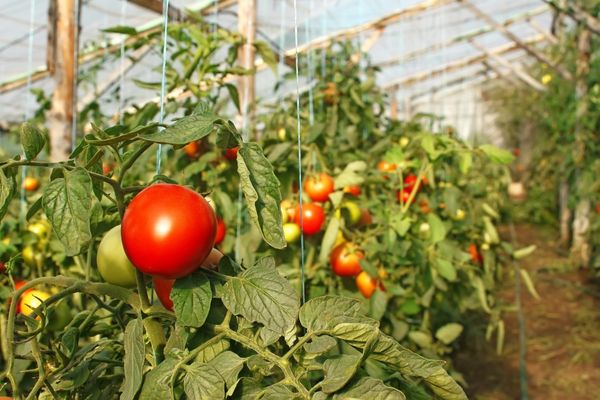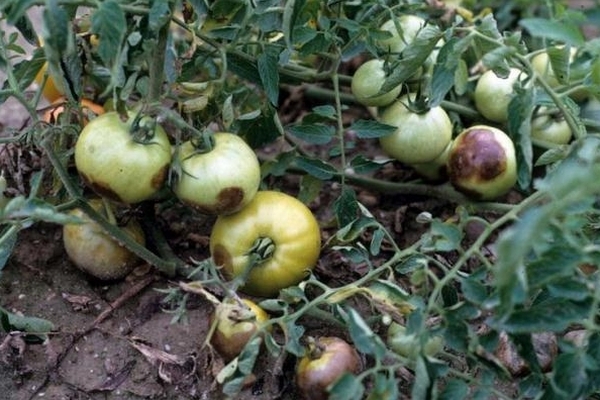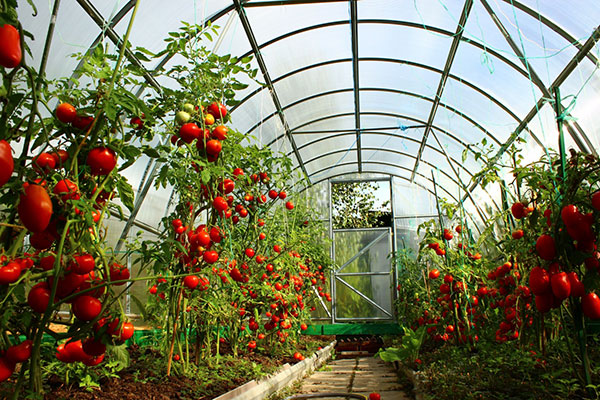Ways to garter tomatoes in a greenhouse
Why tie up
As practical experience shows, a garter is not needed for all varieties of tomatoes that are customary to grow in a greenhouse nowadays. Without it, such types of tomatoes as undersized and having an early ripening period (early ripening) can normally grow and develop. But in the greenhouse, other varieties are most often grown - tall, large, and abundantly fruiting. It is these crops that allow summer residents to get a rich harvest of tomatoes from a relatively small area.  And since a large number of ovaries are formed on tall bushes in a greenhouse, on which a lot of fruits then appear, this overloads the plant itself, as a result of which it needs additional support.
And since a large number of ovaries are formed on tall bushes in a greenhouse, on which a lot of fruits then appear, this overloads the plant itself, as a result of which it needs additional support.
Some inexperienced summer residents do not consider it necessary to tie up tomatoes, because it seems to them that such a culture will be better able to take root and grow. But since planting and growing tomatoes in a greenhouse itself is already unnatural for them, in order to artificially and independently create proper conditions for vegetable crops, as close as possible to natural ones, it is necessary to carry out a garter in a timely manner. What are the arguments in favor of this procedure?
In order to prevent the tomatoes from growing excessively and thickening, it is customary to pinch them - to remove excess lateral shoots. It is much easier and faster to carry out pinching if the plants are already tied up, and are not located on the ground under the weight of the fruits. Tall varieties of tomatoes cannot normally hold the weight of all fruits, therefore, so that the crops do not break, they must be tied up in time... In addition, if this procedure is not carried out, then the fruits lying on the ground are at risk of being spoiled by slugs and other pests.
Late blight, the pathogens of which live in the soil, most quickly affects those tomatoes that are on the surface of the earth. Thus, tying the tomatoes will help keep your vegetables safe. Also, if the vegetable crops are not provided with supports, during watering, water will surely get on the leaves and ovaries. And for tomatoes this is unacceptable, because according to the rules, they can only be watered at the root. And in conclusion, it should be noted that without tying the bushes, there is a possibility that you will not be able to get a rich harvest or even be left without it. And the gardener himself will not have to spend a lot of time and effort in caring for tomatoes, if they are provided with supports.
Garter methods
Technologies for garter tomatoes in the open field and in a polycarbonate greenhouse are not much different from each other. You will need metal rods, wire (twine will do), garter material, which should be not only wide, but also quite strong.
Experienced gardeners advise using fabric divided into wide rags, the width of which should be about 4 cm, as a material for tying plants in a greenhouse.
In addition to the materials at hand, from which you can build garter belts, today there are reusable accessories made from practical plastic on sale. ![]()
We also recommend that experienced summer residents purchase a special garter - a device that resembles a stapler, with which you can tie crops with a ribbon. There are several methods of garter tomato. It must be remembered that there are small protrusions on the stems of plants, the purpose of which is to provide vegetables with adequate nutrition. If the stems are not tied up in time, then the crops that will necessarily fall on the ground will receive more valuable substances, which is why one can expect increased yields from them. But this technique is only suitable for hot climatic zones, and in a greenhouse in our area, tomatoes must be provided with additional supports.
One method is to peg the tomatoes on a peg. To do this, in the immediate vicinity of the bush, a special rail should be driven in, to which the stalk of the vegetable crop will be tied with a rope. Before carrying out the procedure, it is advised to boil the material in order to prevent the appearance of microbes or pests in the future. Best suited for these purposes are strips into which men's shirts made of synthetics are cut - they do not rot and are considered durable. The rope must be tied around the peg and stem of the plant in several layers, after which a solid knot is tied. In no case should you tighten the rope on the stem too much, as you can harm the plant, which will ultimately lead to its death. The culture will continue to grow, so periodically you will have to move the rope up or do the garter again.
The rope must be tied around the peg and stem of the plant in several layers, after which a solid knot is tied. In no case should you tighten the rope on the stem too much, as you can harm the plant, which will ultimately lead to its death. The culture will continue to grow, so periodically you will have to move the rope up or do the garter again.
The second way to tie vegetables in a greenhouse is as follows - you need to dig in on both sides of the garden a couple of bars, the diameter of which should be at least 5 cm.Then a wire is pulled between them, then a piece of rope must be tied to it over each of the tomato bushes from one end, and on the other, the stem of the plant. How is this method convenient? As the crop grows, the gardener does not have to re-do the garter, since the plants will be able to twine around the rope on their own.
Another way to tie up vegetable crops is to drive a peg on each side of a row of planted plants, between which a strong wire should be pulled. The essence of the method lies in the fact that as the tomatoes grow, they receive reliable support in the form of a wire and can calmly grow up. Each of the above methods has its supporters, and novice gardeners will have to decide on their own which of the tomato garter methods to prefer for their greenhouse.
Video "Secrets of growing tomatoes"
Growing tomatoes, even experienced gardeners sometimes make mistakes. In the video, a woman tells how to properly water, pinch, tie and pollinate seedlings.
